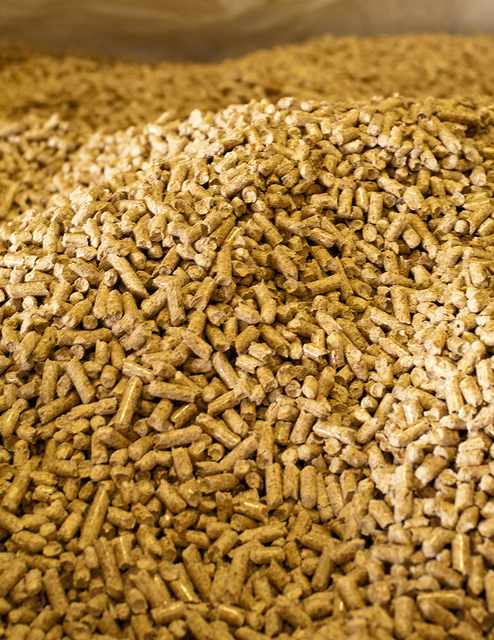5.3a: Reducción de Tamaño
- Page ID
- 84367
5.3a Reducción de Tamaño
La reducción de tamaño también se conoce como trituración. La disminución del tamaño de partícula de la biomasa mejora la accesibilidad a los carbohidratos de la pared celular de la planta para la despolimerización química También puede aumentar la densidad aparente para almacenamiento y transporte. Hay un costo de energía al usar la reducción mecánica de tamaño. Por ejemplo, se necesitan 20-40 kWh/toneladas métricas para reducir el tamaño de las virutas de madera dura a partículas gruesas de 0.6-2.0 mm de tamaño, y los kWhs suelen tener un costo de entre 0.04-0.10 dólares por kWh. Para reducir el tamaño de las partículas a un tamaño fino (0.15-0.30 mm), se requieren 100-200 kWh/ton.
Existen múltiples métodos utilizados para reducir el tamaño de las partículas, y el método utilizado dependerá de si la muestra es seca o húmeda. Hay molinos de martillos (un martilleo repetitivo de la muestra), molinos de cuchillas (un cuchillo giratorio corta la muestra) y molinos de bolas (la muestra se pone en un recipiente con bolas de metal y se enrolla). En ocasiones la muestra tiene que ser triturada y secada antes de usar algunas de estas técnicas.
Las muestras también pueden ser “densificadas”. Las muestras se pueden mezclar con algún tipo de aglutinante (para mantener los materiales juntos, como un pegamento) y empujarse en forma, o peletizarse. Esto aumenta la densidad aparente (es decir, de 80-150 kg/m 3 para paja o 200 kg/m 3 para aserrín a 600-700 kg/m 3 después de la densificación). Esto puede reducir los costos de transporte, reducir el volumen de almacenamiento y facilitar el manejo. Después de la densificación, los materiales suelen tener menor contenido de humedad.

Crédito: Marcus Kauffman vía Flickr


